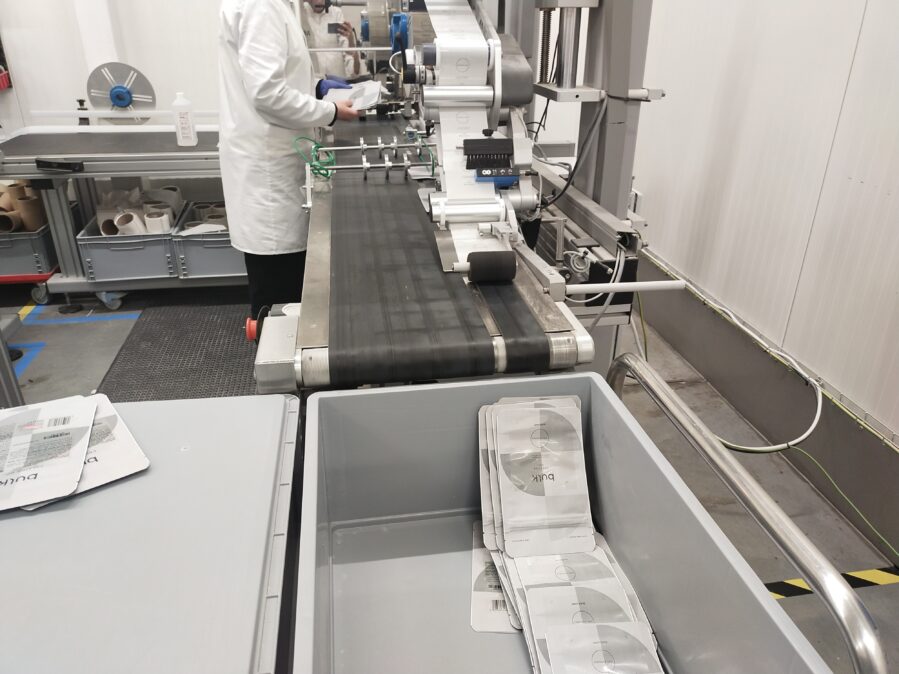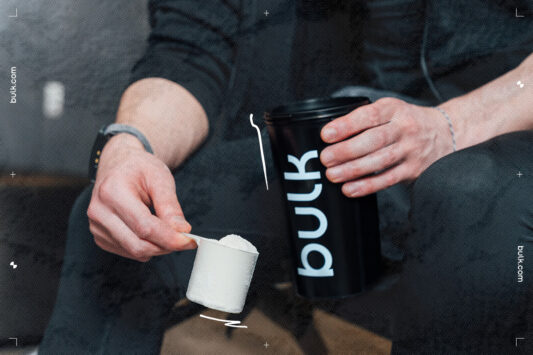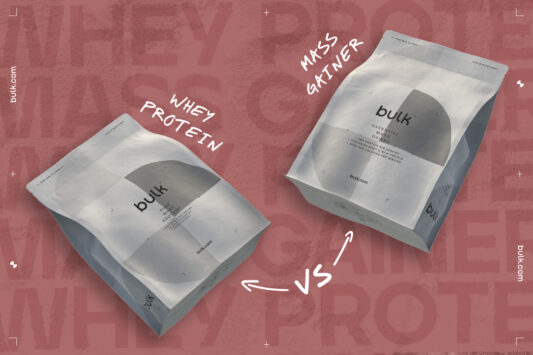With whey protein, pea protein and clear whey isolate, there are all sorts of protein powders available. And their uses are abundant, from post-workout refuelling to pancake mornings.
But where does it come from? In this guide, we reveal everything about how protein powder is made, from source to shaker.
Short answer: How is protein powder made?
Whey comes from cow’s milk, and is taken as a side product from the cheese-making process. To make cheese, enzymes are added to make the milk curdle.
The solid casein is separated out and used to make cheese, leaving the liquid whey behind. This is dried to create whey powder. This is then combined with sweeteners to create a tasty powder ready to be made into a shake.
Where does whey come from?
Whey protein comes from cow’s milk, and is taken as a side product from the cheese-making process. So after cows are milked at the farm, milk is transported to a cheese manufacturing facility and pasteurised. This is a process where the milk is heated to 70-80°C and immediately cooled off, killing unwanted bacteria.
After pasteurisation, the milk is around 80% casein and 20% whey. This is where magic happens. Naturally occurring enzymes are introduced to the milk, causing the milk to curdle, separating the solid casein from the liquid whey. The casein goes on to be used in cheesemaking, while the whey is kept aside.
Following one more filter to remove some of the fat, lactose, minerals and water, the whey spray dried to create whey concentrate powder.
How is whey protein powder made?
Raw unflavoured whey concentrate powder is sent to the manufacturing facility. It’s then mixed with flavours, sweeteners, thickeners and other ingredients to create a delicious protein powder. This could be a classic chocolate protein shake or a more unusual flavour like cinnamon cereal milk.
The lab recipe is then scaled up to our on-site production facility and the manufacturing process begins. First, each ingredient is weighed and sieved into a large IBC (Intermediate Bulk Container). Once everything is in, the powders are blended for around 30 minutes. This ensures the mix is smooth and consistent.
Once blended properly, the protein powder is taste-tested by professionals. If satisfied, it’s then packed into pouches and shipped off to customers.
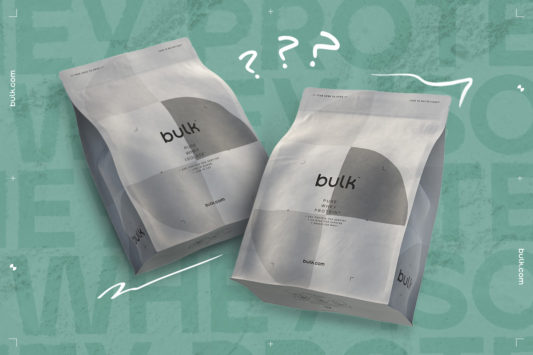
Whey concentrate
The process by which whey protein concentrate is made is explained above. The resulting powder is thick and creamy, with a protein content of around 80%.
Whey concentrate has a mild, creamy taste, which is what makes it the most popular available. The mild notes allow it to be combined with all kinds of flavour profiles, meaning an abundance of flavours.
Whey isolate
Whey protein isolate goes through the same process as whey concentrate, but with further filtering. The process removes more fat and lactose, resulting in a powder closer to 90% protein. This has numerous benefits, including higher protein content, fewer calories and no lactose.
However, there is a sacrifice in taste and texture. Due to the lower amount of fat, whey protein isolate is thinner in texture and can carry over more of the natural ‘whey’ taste. It is also more expensive than whey concentrate.
See our guide on the difference between whey concentrate and whey isolate for more details on their varying pros and cons.
Clear whey isolate
Clear Whey Isolate is a recent innovation in the sports nutrition industry. A game-changer for protein lovers.
Again, clear whey goes through the same processing as whey concentrate: separation from casein, purification, and drying.
However, once the dry powder is collected, it is then hydrolysed. This means the peptide bonds within the molecule are broken down, leaving behind separate amino acid molecules.
It’s like a ‘pre-digestion’ stage, which creates a protein powder with minimal carbohydrate and fat contents. Clear protein is a completely different finished product to whey protein concentrate and isolate.
Due to an acidification process, the resulting product can work with fruity, acidic flavour profiles, meaning the protein shake has a juicy, squash-like consistency. A fruity protein shake.
This is an incredible option if you don’t like the traditional thick and creamy shakes. With flavours like Peach Iced Tea, Tropical and Orange flavours, it’s an easy way to increase your daily protein intake.
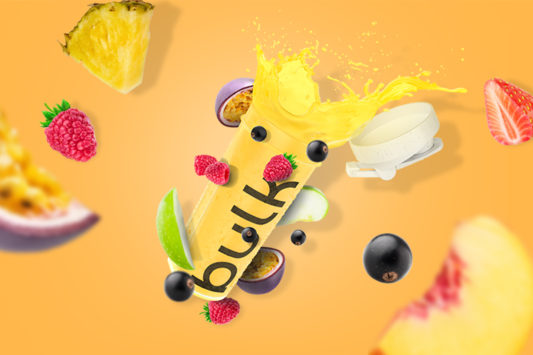
How is vegan protein powder made?
Vegan Protein Powder comes from all sorts of different plant sources. From pea, soy, sunflower seed and hemp, the choice is endless, each with different processes involved to isolate that protein from the source.
You can also get vegan protein powder blends which combine multiple vegan protein sources, meaning it contains all the essential amino acids.
Some people might find an individual protein source to have a specific taste they don’t like, so blending multiple sources together helps to make it taste better.
Soya
Soya Protein Isolate is made from soybeans. No surprises there.
The soybeans are dehulled, flaked and defatted by hexane extraction to produce soybean flakes. These flakes then go through alkali extraction (gathers the protein), centrifugation (removes the fibre) and drying (makes the powder). And at the end of all that, you get a powder that contains 90% protein.Lots of scientific terms we know, but the take-home point here is that soya is packed with protein. It’s also the only complete vegan protein source. By complete, we mean it contains all nine essential amino acids – the amino acids our body cannot create itself, so need to get through food.
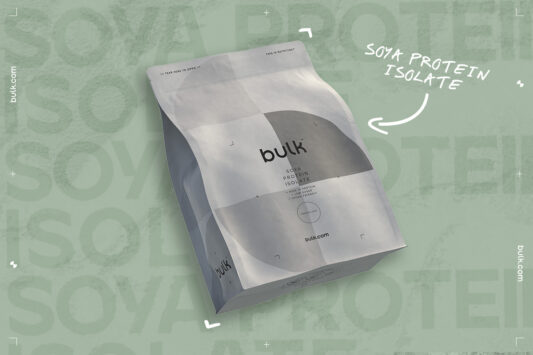
Pea
Pea protein is made from yellow split peas (not the green garden peas you have with your fish and chips).
The process begins with the outer shells being removed before it’s grounded and milled into flour. The flour then goes through a wet filtration process to remove the starch and fibre leaving behind the protein, vitamins and minerals. These are then distilled to create the protein powder.
Pea protein powder is around 80% protein which is excellent for a vegan powder. There is a minor pea taste in unflavoured powder, but going with a flavoured option makes this fairly unnoticeable.
Brown rice
To make Brown Rice Protein, the grains are soaked and ground up and treated with an enzyme that separates the carbohydrate from the protein. The protein is then ground and dried, leaving the protein powder.
Brown rice protein is high in protein at 80% protein content, however the taste is an acquired one.
Hemp
Hemp protein powder is made from whole hemp seed meal that has had the oil removed. The hemp seed oil is removed using a cold expeller press and the remaining meal is milled into protein powder.
The resulting powder is a lot lower in protein content and due to the lower amount of processing, and tends to be around 50% protein.
Hemp seeds contain all nine essential amino acids and are a rich protein source. This makes hemp seeds and products using hemp seeds a good protein source for people following a vegan diet. The taste is often earthy and nutty.
Quality assurance
When making protein powder, quality assurance is paramount. And it’s no different at Bulk™.
We manufacture all our powders in-house so we can have as much control over the process as possible with measures in place every step of the way. No stone is left unturned.
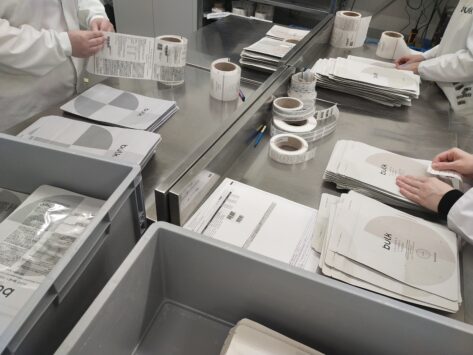
Summary
In conclusion, protein powder production involves intricate processes tailored to the protein source, whether derived from whey or plant-based options like pea, soy and hemp.
This comprehensive guide not only demystifies the production of protein powders but also emphasises the need for consumers to be aware of processing methods, helping you make better choices based on taste preferences, dietary needs and fitness goals.
RELATED ARTICLES
What is Clear Whey Isolate? Alcohol and muscle growth
Protein shake: before or after workout? Different types of protein powder
Protein shakes for weight loss How much protein can your body absorb
Protein shakes with milk or water When to drink protein shakes
Best supplements for muscle growth Whey vs whey isolate
